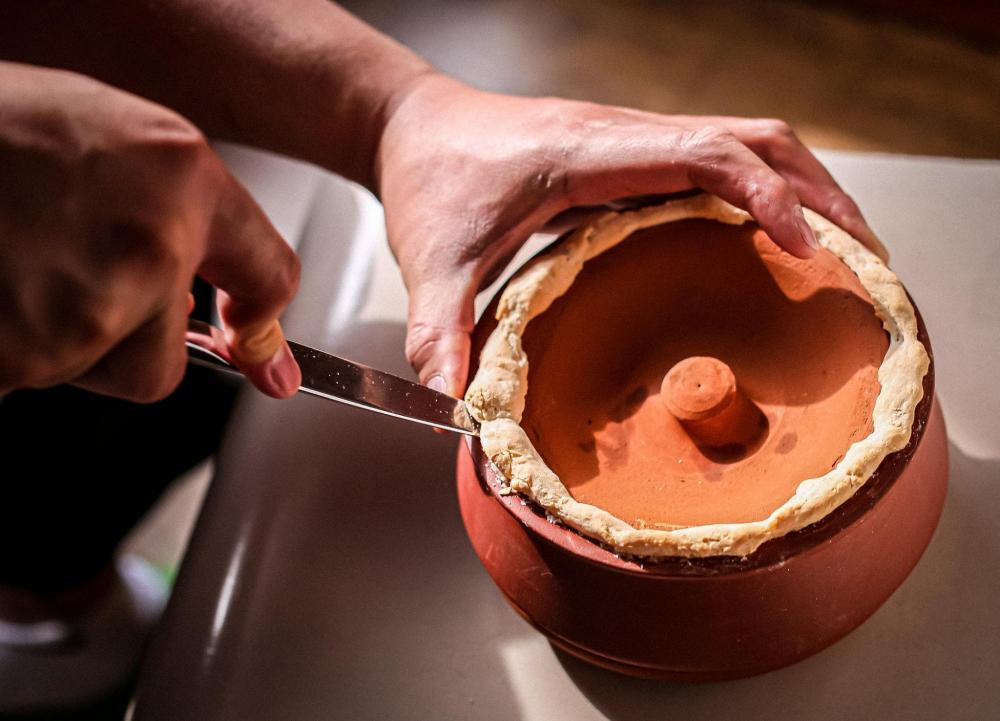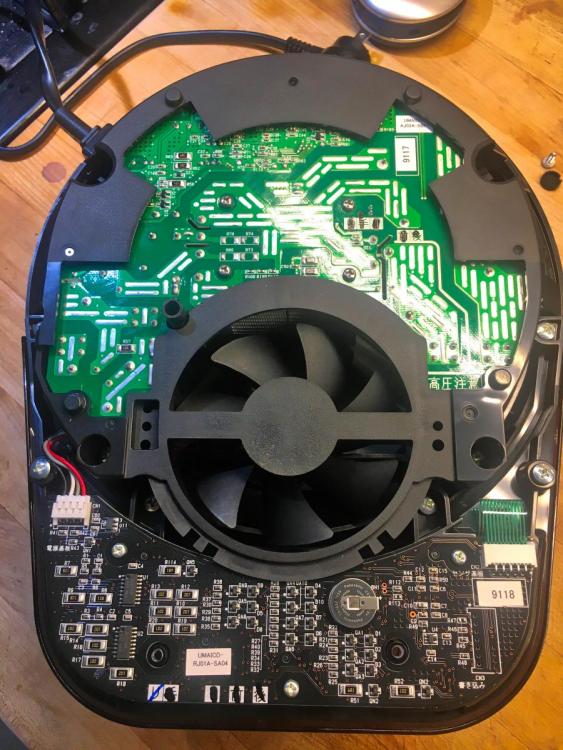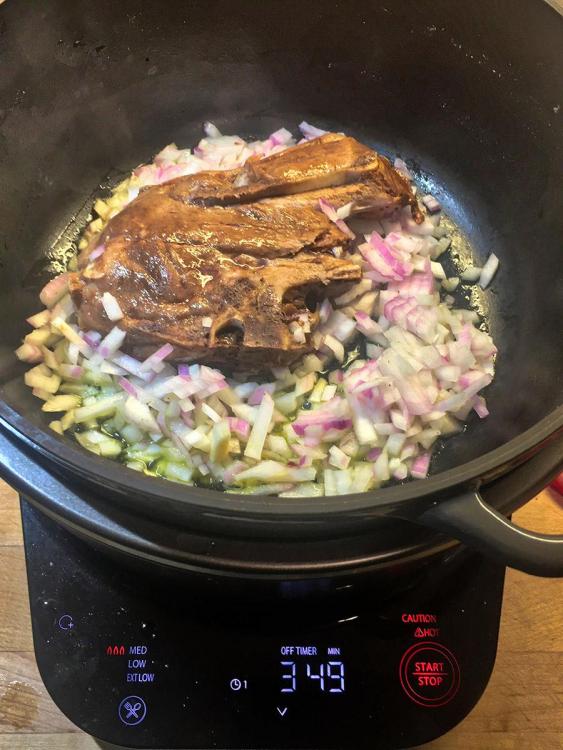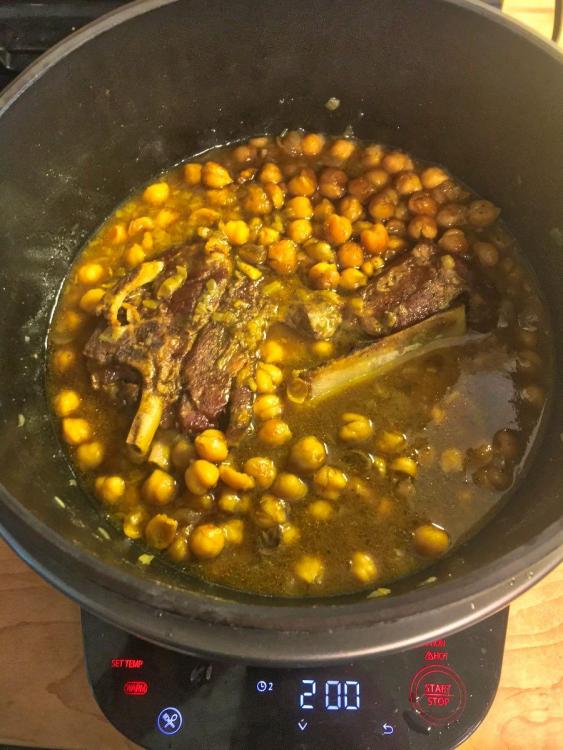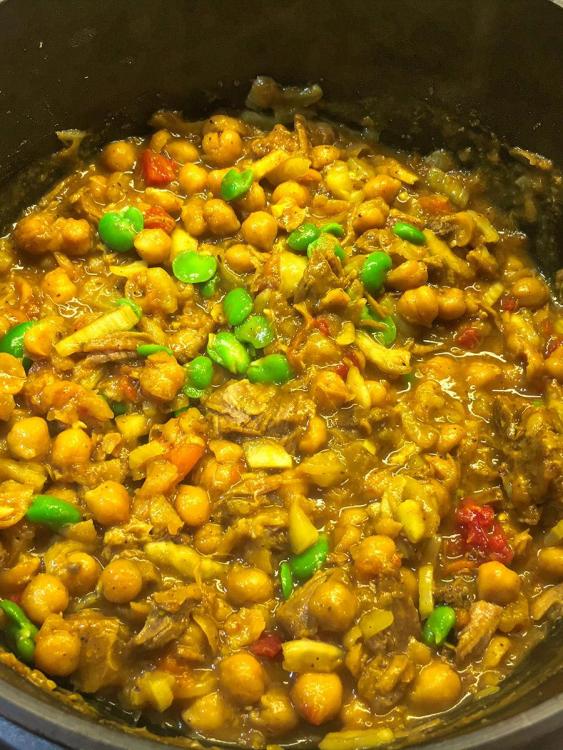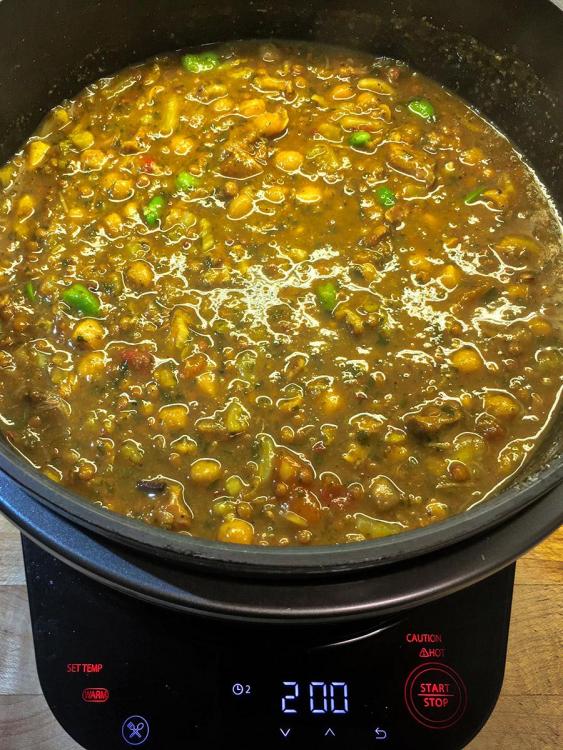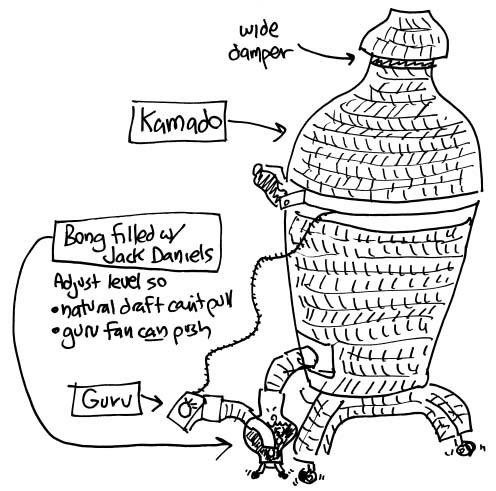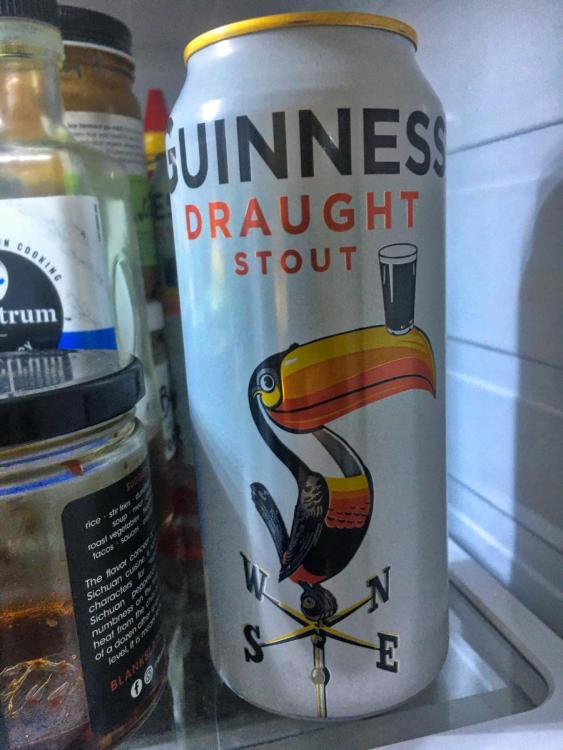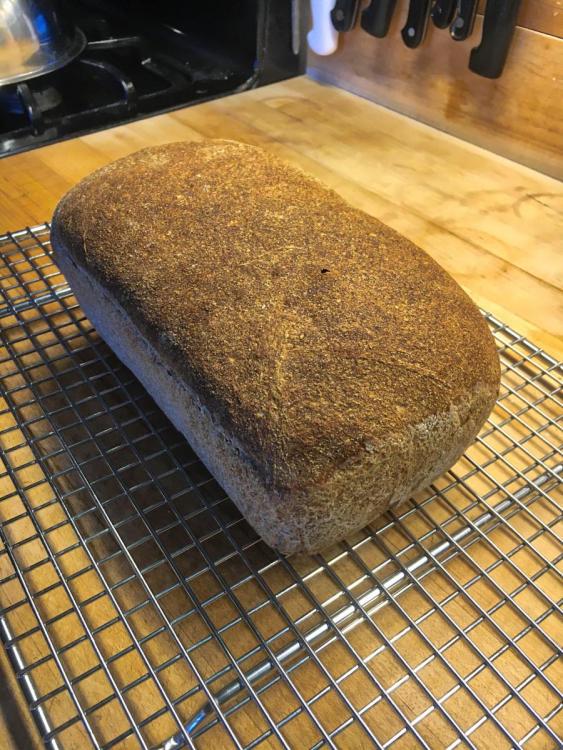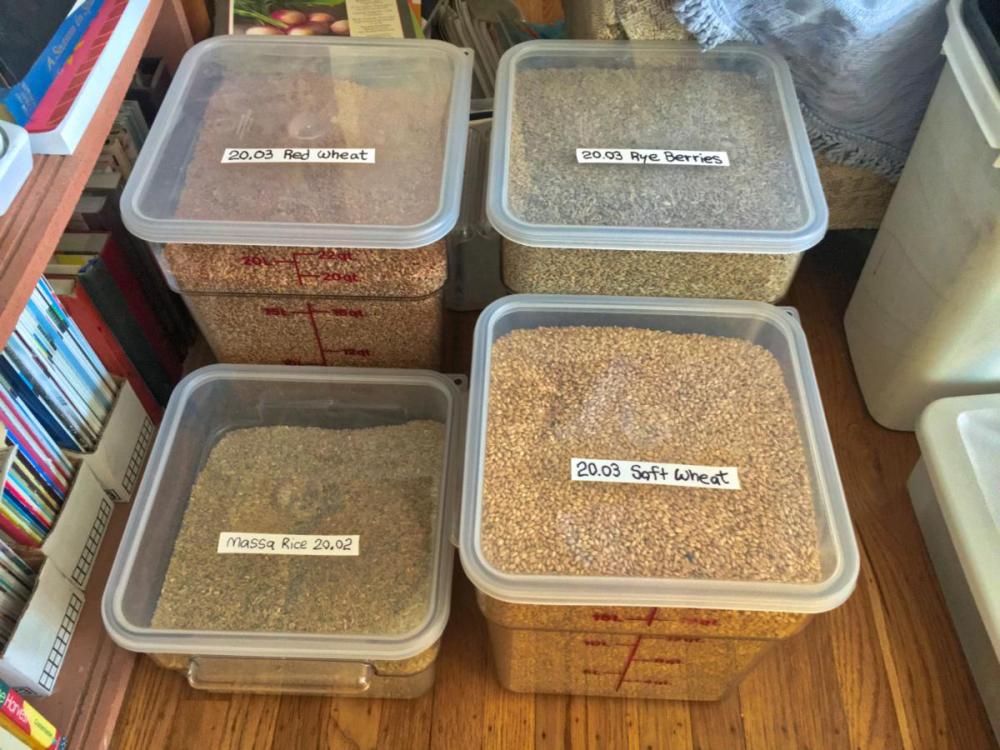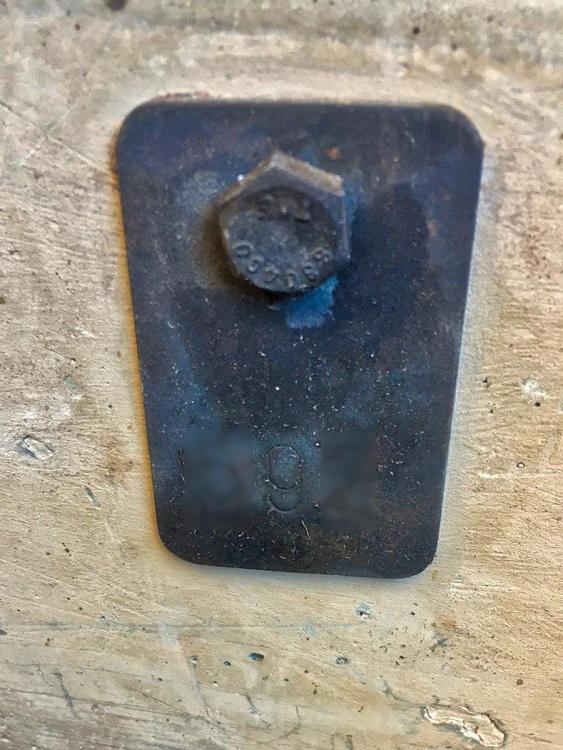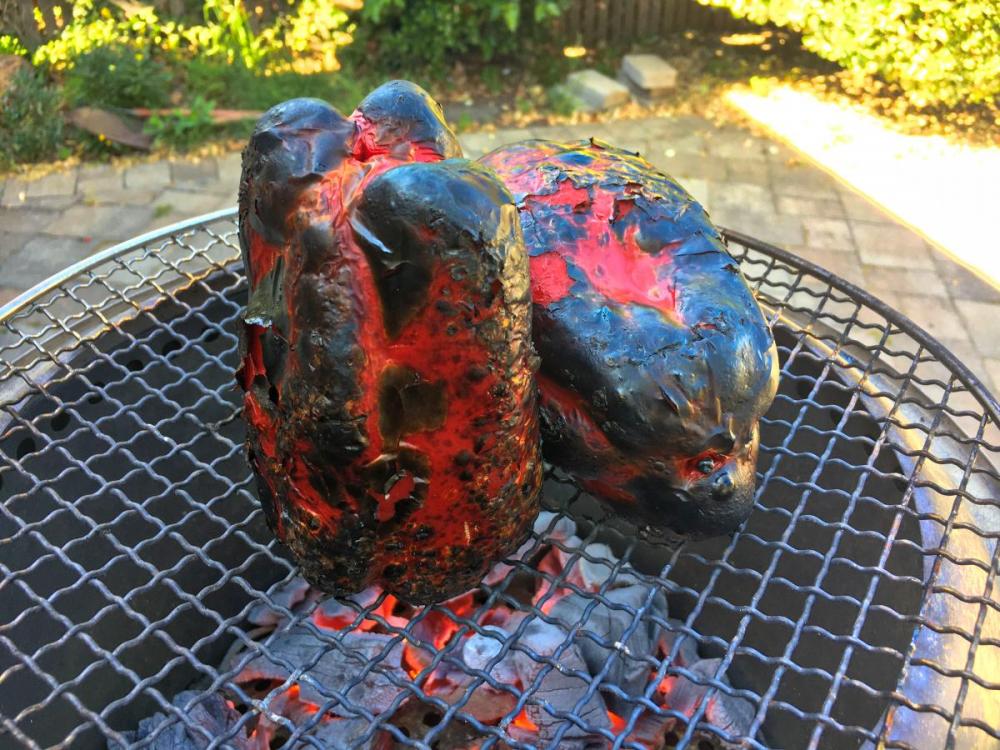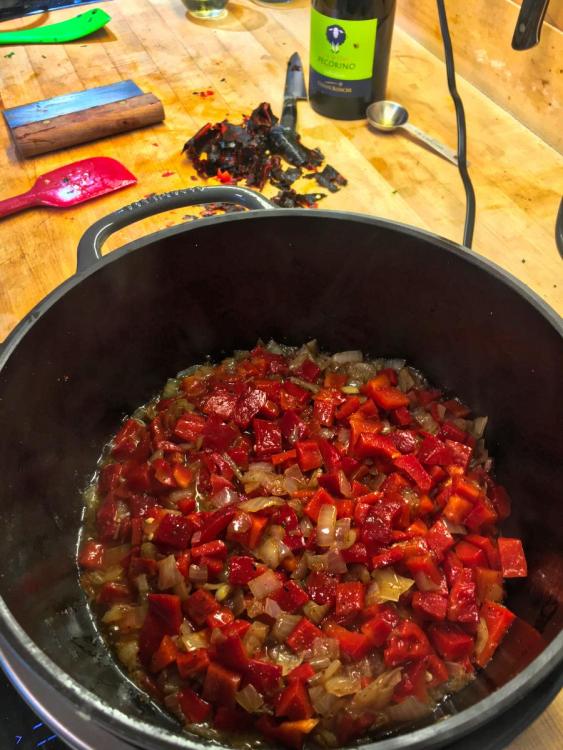-
Posts
1,739 -
Joined
-
Last visited
-
Days Won
53
Content Type
Profiles
Forums
Events
Everything posted by Syzygies
-
Ok, I'm really getting into skewers. I probably want the best Konro I can find. A dear BBQ friend and I saw a great grill on a street corner cart in Queens Chinatown, a few years ago. The thing was cut and welded together from a few pieces of steel plate; if people take up pottery and woodworking (I have) I could learn metalworking, right? There's that chapter in Aaron Franklin's book where he describes how to turn a recycled 500 gallon propane tank (he uses 1000 gallon tanks at the restaurant, he's cutting us some slack) into a cooker. If one had "basic" metalworking skills. I laughed here, at the same time daydreaming. I have a nephew by marriage that could teach me... In any case, this skewer grill was an "L" laying on its back. The main section was a trough over which one grilled skewers. At one end was a chimney (all rectilinear) where one added charcoal into the top, raked charcoal embers out the bottom. This was a brilliant design. Of course, I don't cook all night like they did. I probably want the best Konro I can find. The KK of Konros. What is it?
-

Solo Stove Bonfire - Mrs skreef's new fire pit.
Syzygies replied to ckreef's topic in Jokes, Ribbin' & Misc Banter!
I have the same reservations about cooking on the Breeo lip, but their "Outpost" adjustable rack, toy version of my neighbor's Argentinian grill, is a great idea. To me the Breeo design is more cluttered, with stuff in the way I don't want, making it harder to put on a cart. The Solo Stove is stripped down form = function, and I find it beautiful. I really like grilling on the Solo Stove Ranger, it has become my primary grill. 30 second lighting protocol is wood chunks bottom layer, then charcoal next layer, pour on isopropyl alcohol, don hearing protection or vow to use less next time, drop in a match. !! Pong !! Then shooting flames till everything is lit, and the wood chunks burn to start the charcoal. No further tending necessary till time to cook. Though it's barely big enough for two. The issue here is waiting till the fire dies down to cook. I've ordered a separate Outpost 19 which I plan to attach somehow to my $50 Harbor Fright barbecue cart, so I can begin grilling when the fire is too hot. I've also ordered some over-the-top barbecue skewers, Original Super Skewers hand made in Salem, Oregon where our daughter now lives. Heavy duty double skewers, for stability and to conduct heat into the chunks. We've been making satay and tandoor more frequently again, and I finally see the point of good skewers rather than a grill grate. Ooh! Ooh! I saw that too. I had been searching for years for a high tech version of the Weber, this could be it. Though I prefer the smaller scale of a Solo Stove, more efficient use of charcoal. I doubt that this grill funnels skyward a "the party's here!" searchlight of radiant heat and rising hot air as well as the fire pits do. The fire pits are taller than they are wide. This is wider than it is tall. Though Solo Stove understands this. Their fire pits are too hot for grilling, then a narrow ideal window, then great slower grilling few of us have patience for. They've tried to tune this here. That's exactly why I ordered the Breeo Outpost, an alternate solution to the same problem. Fire too hot, don't want to wait? Cook further from the fire. I almost impulse bought one, but it's too big. Solo Stoves work best when the fire is scaled to the stove, and I have expensive tastes in charcoal. For example, I bought my own palette of KK coffee lump. In other news, I ordered box of Pok Pok Thaan Thai Style Charcoal as described in Acclaimed Chefs and Amateur Grillers Swear by This ‘Mind-Blowing’ Charcoal It's very much in the style of KK extruded coconut, though I expect a different flavor profile. I'll report back once I try it; it just came. -

Vermicular Cast Iron Induction Cooker
Syzygies replied to PVPAUL's topic in Relevant Product Reviews
Did you preheat the Musui then lower in the loaf using the parchment paper? In my cast iron days flinging the loaf into a hot Dutch oven always felt like the wild card in the whole process. I also use my "aluminum disk" steam generator in our indoor oven. Comparing crusts with a Dutch oven always seemed to me to be apples & oranges, as in one can make great bread either way. I never did controlled experiments to articulate exactly what the difference is. Can you? -
Kay. Actually, "The Kay" as grammatical cue that we're not talking about a person. This is common in many languages. Her nickname, in the rare event that something goes wrong, is "Oh Shuck!".
-
-
Wow. Particularly as I've settled on a 3:4 ratio closer to my dough hydration, for a different flavor profile and easier mixing. That would be perfect for sealing smoke pot lids!!!!!
-
Yup. There's some flexibility here. Why did I go with three 1/8" holes on the first smoke pot? Too many holes, and more air gets in, the wood starts burning normally which we're trying to avoid. On the other hand, a single hole could get blocked by an unlucky arrangement of the wood chunks inside; the pressure would then lift the lid, and we'd again have the wood burning normally. Three holes is like NASA flying with redundant systems. It seemed a good balance, and it's worked out for many of us over the years. I seal my lid with flour paste. Much easier than it looks, and of debatable necessity. I did have other versions of lids come loose (stainless steel containers) ruining my cook. So I'm being cautious. And the flour paste has the romance of the Fez Medina; that's how they improve seals in Morocco. Above 275 F or 300 F the smoke pot can get out of hand. I have a picture somewhere of a six inch stream of flames coming out the bottom, from the gases igniting. This isn't our goal for normal cooks.
-

Vermicular Cast Iron Induction Cooker
Syzygies replied to PVPAUL's topic in Relevant Product Reviews
Thanks. Only "for some reason" my next posts won't include the Vermicular Kamado base. -

Vermicular Cast Iron Induction Cooker
Syzygies replied to PVPAUL's topic in Relevant Product Reviews
Cosmetic! If you're cooking anything that could boil over, stay in the kitchen and don't let it happen. For example, don't let beans boil over and make a mess everywhere, just because you're worried about Phytohaemagglutinin. You're supposed to be in a Zoom meeting? Not a good excuse. Actually, a great excuse, but it won't affect the outcome. What you don't want to do is get liquid through the outer side vents into the electronics, while it's plugged in. This could trip your house circuit breaker, and kill the Kamado's power supply. There isn't a warranty seal on the Phillips head screws holding the base together. The base comes off easily. The electronics inside are very solidly built, with several submodules that Vermicular could easily swap out for an easy repair. There's no circuit breaker or fuse visible inside the unit. The coin lithium battery looks to be more easily changed than the battery in a Zojirushi rice cooker. At this price, one can imagine that if someone was this incredibly, inexcusably, "can't even fog a mirror" stupid, they'd find that Vermicular has exceptional customer service. This is all hypothetical, of course. I have an active imagination. I just wanted to take a look inside. However, I think I'll hold back on posting for a week or two, to let Mac have her day. -
My wood experiments long ago were too much for me, but they lead me to briefly making my own charcoal, then devising the smoke pot. It is worth studying how one traditionally makes charcoal. Wood is enclosed in a barrel over a small fire. As the wood heats, it starts off-gassing flammable volatiles through holes in the bottom, facing the fire. They ignite, and the fire is no longer needed. When these flames go out and the barrel cools, one has charcoal inside the barrel. In contrast, it is very hard to avoid nasty flavors while burning wood in the open. One ideally has two fires, one to prepare logs by initial burning, the second to burn "mature" logs for the actual barbecue. A truly advanced technique is to also use green wood in the barbecue pit itself, but that requires the correct equipment and experience. I have often wondered about creating chambers heated by natural gas, whose purpose was to heat wood until it off-gases these flammable volatiles. Now pipe this "wood gas" into a conventional oven with conventional controls. For example, Danny Meyers spent a small fortune outfitting the NYC barbecue restaurant Blue Smoke; the approach I'm suggesting would be well within his budget. It could perhaps even save money, as handling the smoke is a tricky part of getting permits for such a restaurant in a major city. The smoke pot is a more subtle, refined smoke but a definite flavor enhancement. Smoke becomes a spice to balance in harmony with other flavors. Once I showed my wife this choice, it was always barbecue this way or sleep on the couch! I believe that what I propose would work well in a restaurant.
-

Vermicular Cast Iron Induction Cooker
Syzygies replied to PVPAUL's topic in Relevant Product Reviews
Tonight was Paula Wolfert's Tangier-style Harira, with Rancho Gordo chickpeas, and brown lentils. The fava beans are from our garden. -
Nothing comes close to a chamber vacuum sealer. Though were I doing it again I'd get an oil pump model, despite the higher routine maintenance and the increased weight. We keep ours in a middle shed, renovated to more "room" than "garage" status. The one issue is that these things don't work well cold; the chamber doesn't reach as full a vacuum. When I bought my first argon tank for preserving wine, the guy at AirGas politely called me an idiot seven times for not going to double the size tank. The costs were all the same. I kept explaining that it wasn't the money, I wanted to stay married. Then the tank ended up outside, near the chamber machine. When the tank ran out after a few years, I upgraded to the larger size.
-
I have a good electric power washer, that I bought for maintaining an IPE deck. It revolutionizes BBQ grate cleanup. There's a bit of setup and teardown, but I'm outside puttering, I don't even notice. What I don't like is getting my hands greasy while scrubbing haphazardly at nooks and crannies, to poor effect. The power washer gets it done, better than I ever could by hand. We gave away our rotisserie long ago because it wasn't worth the cleanup. I'd consider one now.
-
I bought 592 in September, 2009. Of course, they enter and leave the warehouse at random.
-
When I Photoshop, I try to Photoshop with a wink. I guess I've stared at too many cold war photos with a shadow going the wrong way. Laurie thinks my Photoshop was too subtle. I very nearly bought one of the first Dennis KKs. I didn't understand the very interesting lineage, and misread them as copies. One can actually listen to Manfred Mann's Mighty Quinn. Dylan's original is wretched. Nevertheless, I think of the original as single malt scotch, the copy as Dewars. Boy did I get this wrong, but I made this right later.
-
More on the "Men cook with fire" gender stereotype: I used to have a beach house share on Kismet, Fire Island. Each town is known for its excesses, and one can question my motives for needing to reveal the town. Cherry Grove had the best partying, and all were welcome as long as they weren't too insecure in clutching an opposite-sex partner's hand. Passion consumes everything on Fire Island. The best club alas burned down. This story is about fire. One Fall night I found myself alone in the house with a prominent motivational speaker; she traveled too much to make it out to the house much, but was finally free. A strong personality would be understating the situation. It was cold, we needed a fire. I assumed a bit too much control, setting the fire. It wasn't that I didn't believe women could light a fire as well as me. I didn't believe anyone could light a fire as well as me. Rather than protesting directly, she proceeded to describe the importance of fire in pottery. How in Japanese lore, a potter struggled for years to replicate a glaze desired by the emperor. He finally gave up, and threw himself into the fire. Oxygen restriction is now recognized as an important technique in developing glazes. As the story goes, the pots he died for came out exactly as he sought. Huh. I guess women do understand something about fire. I relayed this story to a Chinese scholar. She promptly corrected me that the original legend was from China. Of course.
-
"Men cook with fire" gender stereotypes aside, women are a key presence here on this forum. The partner debate can go either way. I had to work on Laurie to get our first off-brand "Richard" K, which fell apart. Dekes can work. I had Laurie believing that I wanted to build a wood-fired pizza oven in the middle of our lawn. After a few years of kamado outdoor cooking, it was Laurie's idea to upgrade to a KK. We were both thrilled to speak with Dennis. I projected bonding with a kindred spirit who exemplifies OCD as a life force, a positive expression of the species. What else could explain the beauty of a KK? What did Laurie project? Um, err, um, let's just say Dennis has a gift best left unexplored. I was so happy to get the KK, I just watched Laurie's reaction with amusement.
-
At one point I learned the classification of Parisian bread types. At one extreme there's the white flour, yeast-raised baguette that one really should snack on during the walk home, for it will already be stale on arrival. At the other extreme are higher extraction breads featuring rye and natural leavening, and they have the longest shelf life, even in the same form factor as a baguette. There's a similar continuum of sourdough effects. In San Francisco one expects sourdough to be sour. Not the Kaffir lime juice the Thais would use to clean engine parts, but sour. The French consider that a failing, mishandled sourdough. Sourdough should impart a more complex flavor, but by managing hydration and timing it need only be somewhat sour. Like smoke or breasts; if one is insecure about misidentifying objects of lust on the search for good BBQ, one wants obvious confirmation. The French are more subtle. I find that with some rye and some sourdough levain, my breads keep longer, even if I also add a bit of yeast. And the yeast offers insurance.
-
This was a lot harder back in the day (my first, off-brand, Kamado, that shed its tiles then disintegrated in less time than I've owned my still-young KK).
-
This is their branding, consistent across the product line. I told you Steve Sando was charismatic. Have you seen our "Forged by the Gods" model?
-
Haven't eaten there, but I was the "dumb end of the board" helping my woodworker neighbor install a fancy shed for extra storage, before their remodel. Thomas Keller pays attention to detail, I got to meet him twice. I mentioned using his sous vide cookbook, and he didn't look surprised at all. He later asked about the roof color, and I suggested no, it should match on Google Earth. That elicited a bit of surprise. The veggies being dropped off were mind-boggling. Our favorite sous vide vegetable is also potatoes. I've sold friends on sous vide this way, that feel they have meat otherwise mastered: Peel and quarter (or to size) potatoes, vacuum pack, and cook sous vide at 185 F or above (this is the threshold for most vegetables to actually cook) for one to two hours (to taste, revisit this on subsequent trials). Chill the packs completely, ideally overnight, or in ice water if in a hurry. A few hours before cooking, open the packs and spread out the potatoes on a cooling rack, with a fan blowing on them, to dry off as much surface moisture as possible. (A brief time in a dehydrator would also work, but that's more cleanup.) To serve, fry hard in ghee, with salt and pepper to taste, till they pick up lots of color and cook completely through. Twice-cooked starch is transcendent. That's the whole idea behind french fries done right. This is a riff on that. Thomas Keller discourages sous vide for most vegetables. I don't make complete dishes from his first cookbook, The French Laundry, but there are some amazing techniques in there. For example, cooking lobster just long enough to remove and reserve the meat, then using the shells for stock, then gently cooking the meat in mostly butter, some water (which translates well to sous vide). I've used this to top a gumbo to die for. His favorite vegetable technique is "big pot boiling". I mean big, like a 16 quart pot. (There is online debate on how big is necessary. Diminishing returns, of course, but people are revealing that they can't tell the difference, not that you can't. It's not easy to cook beyond one's perceptions; I'm convinced Keller is a super-taster.) Nearly fill with water salted to sea water (decide to taste), bring to hard boil, and plunge vegetables to cook exactly to taste. Plunge next into ice water to arrest cooking. This preserves flavor and color, which matters at his prices. If you save tomato harvests as we do by skinning, partially dehydrating with salt till "gooshy", and freezing, then adding those tomatoes to Blue Lake green beans cooked big pot boiling and dressed with your favorite vinaigrette makes the best green bean salad I've ever made. I've brought this as a vegetable side to Thanksgiving by very serious cooks; this is the only "pot luck" veggie course I know that can break through the cacophony of other dishes.
-
As it happens I managed to join the Rancho Gordo bean club when it was taking members a few years ago. For those elsewhere, Rancho Gordo is the premier source of heirloom beans in the US, grown domestically and imported from Mexico. They've been slammed since the pandemic; everyone who isn't baking bread wants to cook beans. Club members get six surprise pounds of beans every quarter, plus a few bonus items such as the above Farro Grande. That's what I've been using recently. Their facebook forum had a debate today on Farro / Spelt, exactly your question. The article About Farro on the Anson Mills site is taken to be authoritative. Anson Mills is a similarly premier source of artisan grains, without as fervent a fan base only because it lacks a visible charismatic leader like Rancho Gordo's Steve Sando or our Dennis. And one cannot name-check sources of this caliber without calling out Masienda, where I get many varieties of Oaxacan corn to make nixtamal to grind into masa for tortillas, and The Mala Market, whose ingredients elevate Sichuan cooking to transcendent heights. Truth be told, I'll grind anything. I've noticed that what's called farro from an Italian source in the US looks different and tastes better than what's labeled spelt in a health food store bin. Spelt brings back bad memories of eating hippie bread in the 70's. But the grains are related. And I've used emmer and einkorn in my bread "guest slot", whatever I bought recently in a small bag at a farmers market, whatever looks good.
-
COVID has cost me all of my personal integrity. Stand mixer, loaf pan, no steam. At least we still grind our flour. I even ordered an upgraded loaf pan with straight sides, the Vollrath 4V. We've storing more grain than ever before, but working through it feeding sourdough starter, making bread twice a week, fresh pasta and other baking. For this loaf I swapped in Guiness stout for water, cooking it down as I cooked the potatoes, then topping back up to the target weight. We like this recipe, a lot. Sourdough Whole-Recipe.pdf
-
There's a tag inside each KK that would help figure this out. I bought my 23" well over a decade ago. I'm very proud of my serial number. Apparently there were only eight people before me.
-

Vermicular Cast Iron Induction Cooker
Syzygies replied to PVPAUL's topic in Relevant Product Reviews
Farmers market kale on polenta. When we're vegetarian we don't realize it till we're eating. I wanted to try making the polenta in the Vermicular Musui Kamado ("Indoor K") but Laurie likes to make it her way. And we had a deadline to get dinner on the table (Laurie had a Zoom tai chi class; we weren't going anywhere!). So I got the kale braising, then played with my Solo Stove to roast the peppers, then made an onion/pepper soffritto in the indoor K to mix into the braised kale. Got to play with all of my recent toys. Handy having three front burners. My brother has end-of-life care instructions that no one is to feed him if he can't raise a fork to his mouth himself. I'd been thinking to amend mine about "if I can't cook for myself" to include something about gas stoves. But induction is remarkable, more heat without burning. One of my earliest revelations about stews was that the whole is always less than the sum of the parts. (My brief foray into film convinced me the same about acting, screen charisma reveals a mere shadow of really developed personas.) Can one tell for sure that I fire-roasted the chiles? The braised kale was good, I'd think I'd miss the fire. Anyhow, fire is more satisfying than any other form of cooking.




